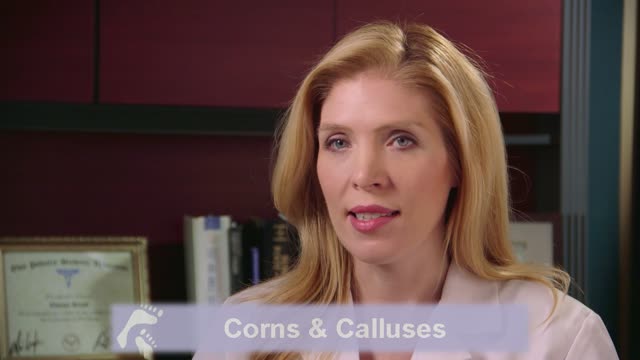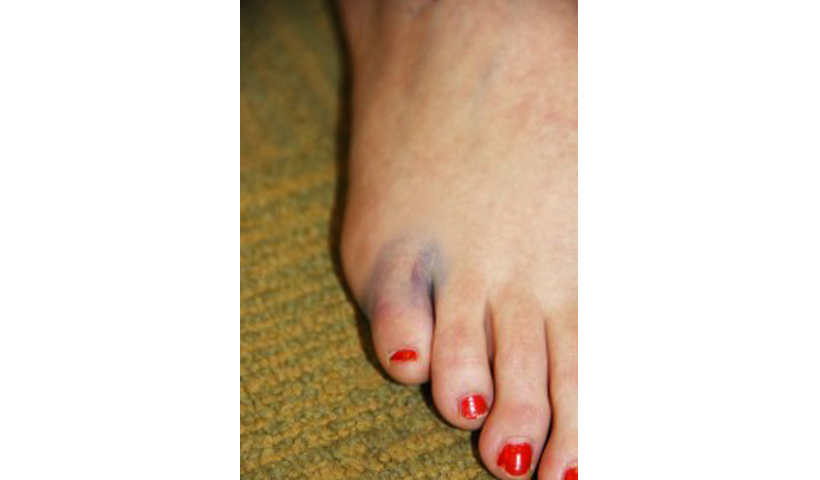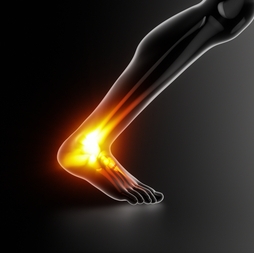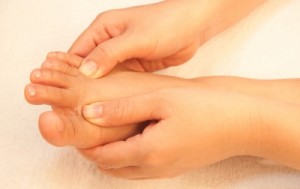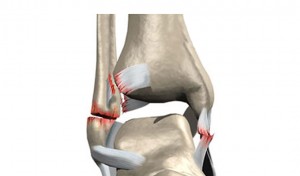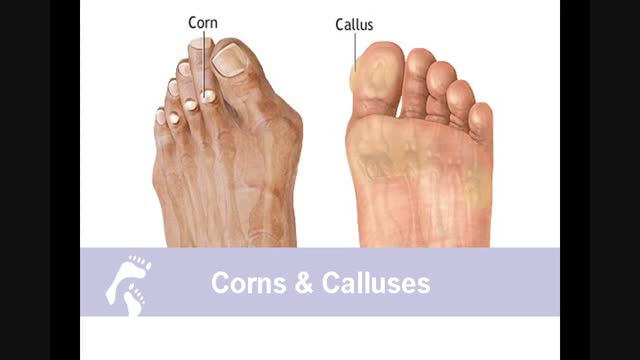
Our feet and toes are pretty strong, equipped to deal with lots of stress and pressure throughout our lifetime. They have to be, they are the base of our entire skeletal structure and we depend on them to get us where we want to go. The skin on our feet, as well as on our whole body, has a way of protecting itself against irritation. It builds up extra layers at the point of friction to cushion underlying tissue from injury. Those small, round patches of hard, thickened skin that form are called corns – and are caused by pinpoint areas of friction. A callus forms as a result of diffuse, excessive pressure and are usually found on the bottoms of our feet and heels.
Hard or Soft Corns: What’s the Difference?
The hard type usually forms on the tops and sides of your toes, but they can also form at a point of pressure on your soles. They are usually associated with a joint or bone that is sticking up or out more than normal. Conditions like bunions and deformities like hammertoe, claw toe, or mallet toe involve joints that have moved out of position. The bones protrude and press your skin against your shoes, causing friction and irritation points. Your body gets to work, forming extra skin cells to protect the area under attack. Soon, a dry patch of skin covers the spot. This can actually cause extra pain because the hard round area puts even more pressure on the tissue underneath.
Sometimes, it is the areas between your toes that end up rubbing against each other—either from poor-fitting shoes or misaligned bones. This area usually maintains more moisture, so the area is softer and the layers of extra dead skin peel away. Soft corns can be painful if the skin becomes raw or blisters develop.
How to Avoid Extra Skin
Shoe choice is obviously the place to start. You need to find a pair that does not cause friction or irritate your feet. Look for smooth styles with no seams in awkward places. They should also have room at the front for your toes to lie flat and move around a bit. Lower heels allow your entire foot to support your weight, whereas higher heels put more pressure on the ball of your foot and shove your feet into the front of the shoe. Wear socks whenever possible, rather than go barefoot in shoes, and make sure they fit well. Again, no seams in the wrong place and no tight toes.
Caring for Corns
At Country Foot Care, we believe that the only proper home cure for corns is applying non-medicated padding to protect the toes in the shoes. Attempting to self-treat corns by cutting them at home or applying corn plasters can cause bleeding and infections, especially for high-risk patient with diabetes or peripheral vascular disease.It is imperative that the paring of corns be performed by a medical specialist like our doctors, who will consider your overall health as well as trimming your corns. Using a moisturizer, such as Pedi-Smooth, that can be found in our product catalog, will help keep your feet well-hydrated and keeps corns softer.
When paring down the hard skin no longer provides relief of the pain caused by corns, a more permanent, surgical solution may be indicated. At Country Foot Care, out well-trained doctors will review all treatment options with you and can help you to decide the best alternative for your care. To make an appointment online you can simply click on the MAKE AS APPOINTMENT button at the top of this page. If you prefer to make your appointment by phone, simply call during regular office hours to speak with one of our team members.

